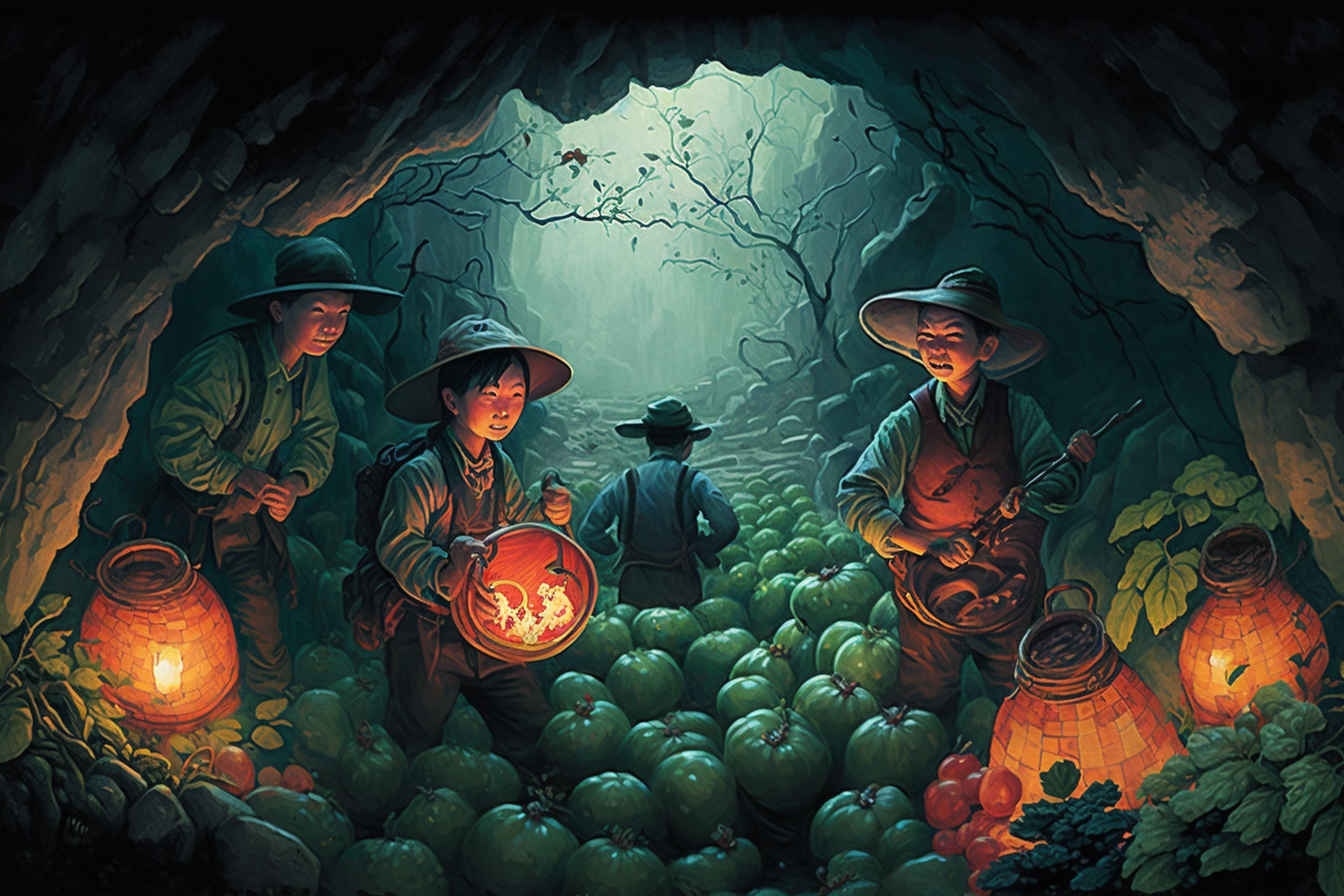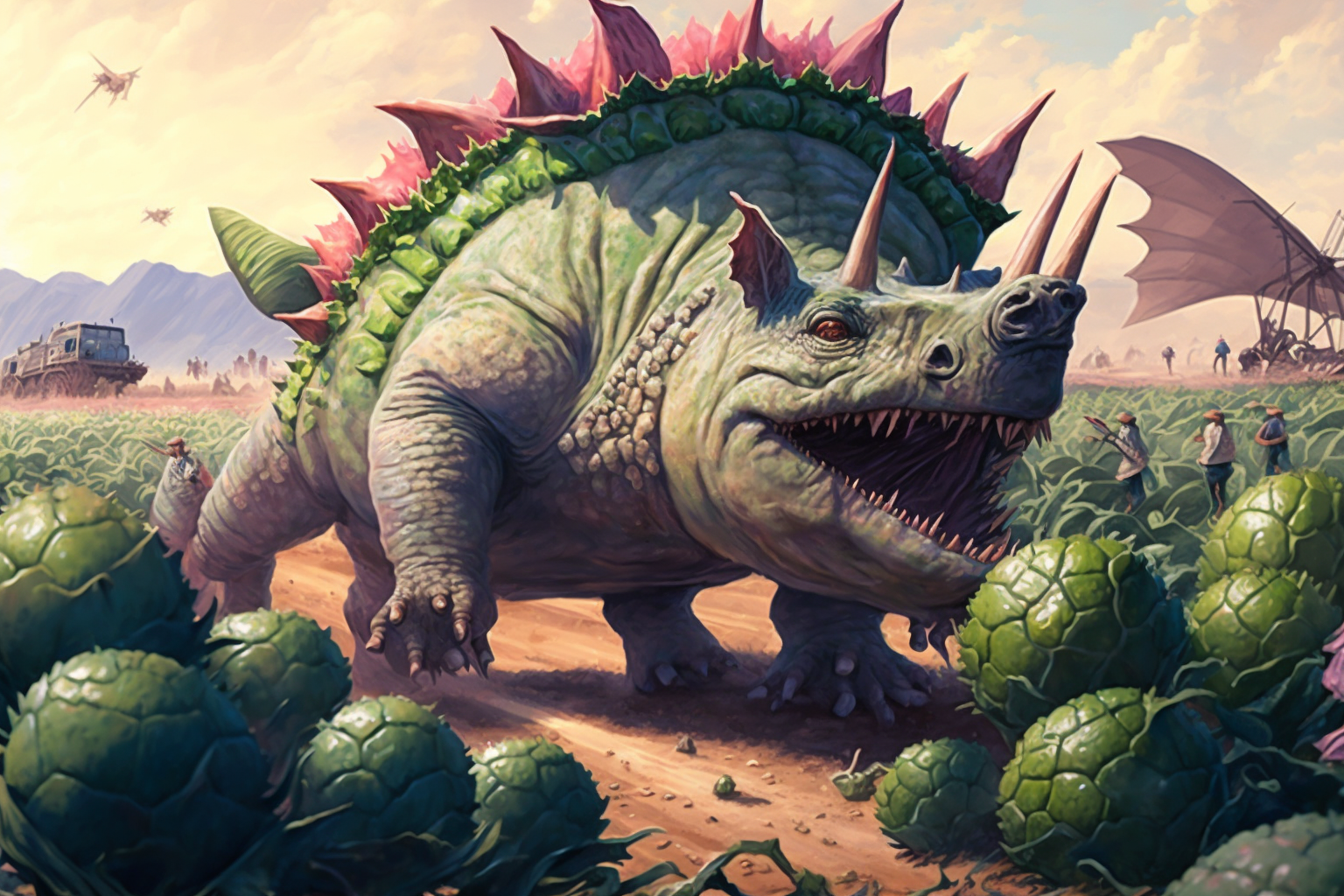Cave Farmer
Cave Farming plays an important role in the civilization of the Kingdom of Han and Cave Farmers are respected and well rewarded for their work.
Career
Qualifications
Cave farming has traditionally been a trade where the skills are passed down within families who possess acknowledged community rights in perpituity to specific plots of land within natural cave systems. In more recent times, as the demand for cave farmed products (particularly melapin) has increased, there have been efforts to open up mines, specifically for cave farming. The new farmland thus exposed, also tends to be allocated to traditional families that have the skills to tend it, but it is sold off at auction and it is allowing more of the children of these families to take over their own land when they come of age.
Career Progression
Children start working with their parents at a young age, helping with simple and less demanding tasks. They will typically spend half their time in education and half at the farms from the age of eight years old. Full time work begins at the age of fifteen and thereafter the young farmer might expect to remain as a worker for their parents until they either inherit the farm or are released to find different work if there is either insufficient farm work, no chance for them to inherit or they simply wish to pursue a different kind of life. A decision on this is typically made when the young farmer reaches the age of twenty.
Payment & Reimbursement
Work as a labourer is usually reasonably well paid but most of the money accrues to the owner of the land, usually the parents of the labourers.
Other Benefits
Cave farmers always get the pick of the crops for themselves if they want them and in periods of famine they will not go hungry. There is much money to be made from the selling of their specialist produce and a cave farm is a valuable asset for the owning family.
Perception
Purpose
One of the main problems which humanity has with maintaining any kind of advanced civilisation on Earth Primal is the need to protect agriculture from the depredations of the mega fauna that trample and eat anything they find desirable on open farmland. In the Kingdom of Han, two solutions have been found which has allowed human society to prosper.
Cave farming, the first of these, works by hiding high value crops in locations where they cannot be seen or accessed by large herbivore pests.
The Han Wall, the second solution, helps to prevent many creatures from entering the Kingdom from the surrounding forests, but it does not always work. This is why many of the open crops now grown around Green Meadows and elsewhere, are low value staples such as rice or grain with high value produce still protected in the caves.
History
Cave farming goes back a long way, before there even was a Kingdom of Han and it has been said that the success of cave farming here was what eventually allowed humans to build the Kingdom at all.
But cave farming really took on a new importance, when it was discovered that the psychoactive properties of the fungus, melapin, enabled humans to tame and ultimately train wandering Diplopack, so that in time these giant beasts, once a nuisance and threat to open agriculture, became vital draft animals that contributed to the development of civilisation. Although cave farming yields many useful crops, melapin has become the single most important product obtained from cave farming. In the image below we see the luminous spherical white fruiting body of a fresh harvest being taken to warmer drying caves to be processed into the "Fruit Balls", Diplopack drovers use to pacify and control their mounts.
Operations
Tools
The main issue with cave farming is the need to replace natural light with alternatives. A type of red lantern, fueled by the wax Halarun tree leaves, is one of the most popular options and can be found throughout the caves. Whilst not especially bright, the fuel is very long lasting and the lanterns can keep burning for many hours without maintenance. Arrays of these lights are used over crops that need it, although this is not the case for melapin, which has the added bonus that it generates luminescence that can help other types of photosynthesising plant. A second type of yellower and brighter light is given off by burning the sap of the Jiramol tree when it can be tapped in spring. A species of blue, bioluminesent moth is sometimes used in Light Jars, if a hatching can be found, although care is needed here, since if they escape the moths can eat the crop. Kept in the jar they can be fed a small amount of honey and will live for a week or more.
Other tools of the trade are more typical of farms everywhere and the cave farmers use spades, hoes, watering cans and weeding trowels just like farmers above the ground.
Materials
Fertiliser is often provided by Diplopack dung, which has the added benefit of recycling melapin spores.
Type
Agricultural / Fishing / Forestry
Demand
Cave farming provides many relatively high value food stocks and the very important fungus melapin.




Comments